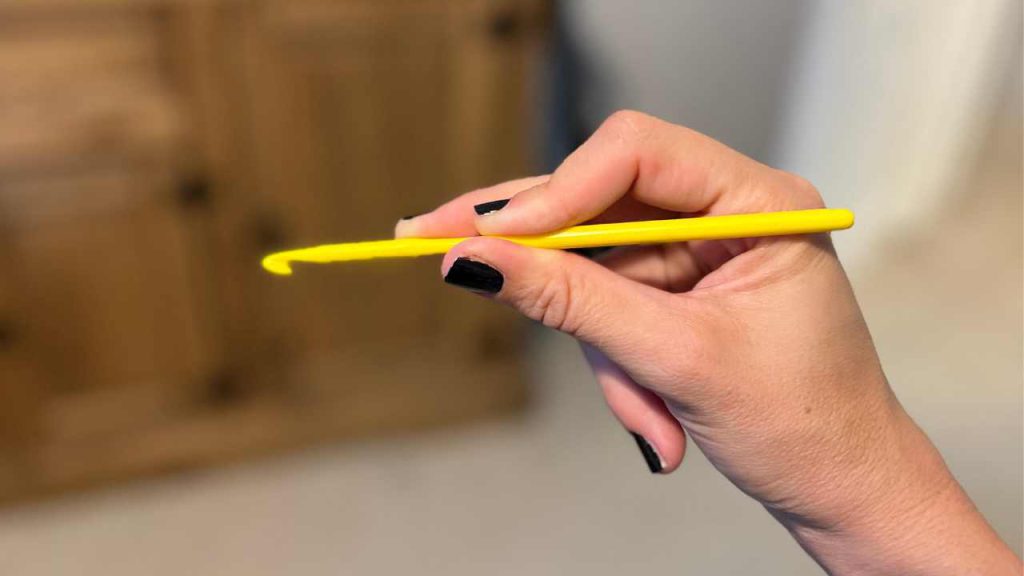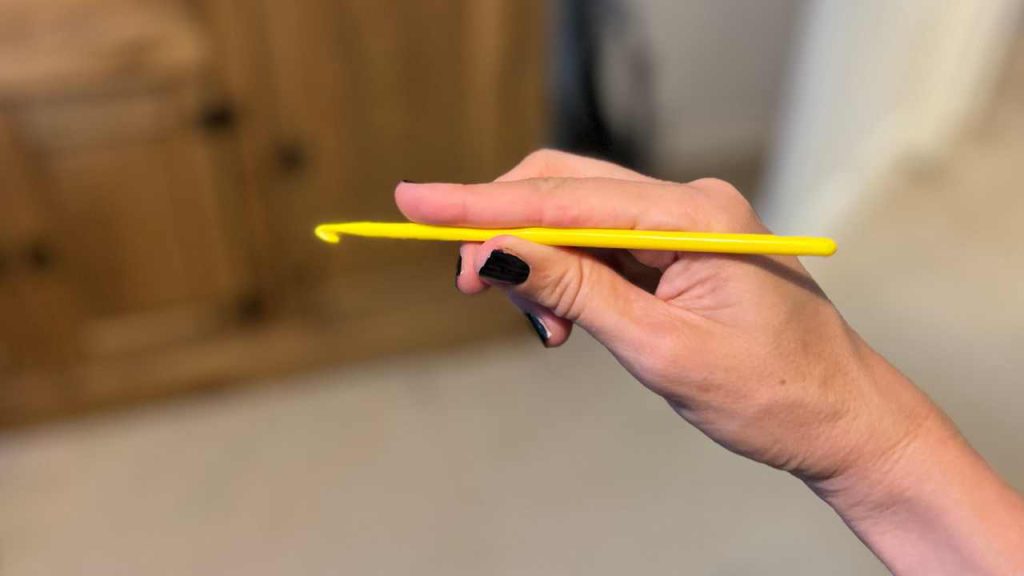
The way you hold your crochet hook is just as important as the yarn you use. A good grip can make all the difference in your tension, speed, and comfort level while crocheting. Whether you’re a beginner or looking to perfect your technique, this guide will walk you through the two most common crochet hook grips.
What is the Right Way to Hold a Crochet Hook?
There isn’t a single “right” way to hold a crochet hook—what matters most is finding a grip that feels comfortable for you and allows you to crochet efficiently. Generally, there are two main ways to hold your crochet hook: the pencil grip and the knife grip.
1. Pencil Grip: Hold It Like a Pencil
The pencil grip is one of the most common ways beginners start out holding their crochet hook. As the name suggests, you hold the hook like you would a pencil, with your fingers wrapped around the handle. This grip gives you precision and control over your stitches.
Steps for Pencil Grip:
- Hold the hook between your thumb and index finger, just like you would hold a pencil.
- Your middle finger rests on the back of the hook for added stability.
- Your ring and pinky fingers can relax on the yarn or the side of your work.
Best for:
- Fine motor control
- Finer stitches
- When you need more precision

2. Knife Grip: Hold It Like a Knife
The knife grip is another popular way to hold the hook, especially for those who prefer a more relaxed and natural grip. It’s often used by crocheters who want more control over their movements, especially when working on larger projects or using bulkier yarns.
Steps for Knife Grip:
- Hold the hook like a knife, with your thumb on one side and your index finger on the other side of the handle.
- Your other fingers can rest along the hook’s handle, while your hand stays more relaxed.
- The hook will naturally point toward the direction of your stitches.
Best for:
- Larger projects
- Bulkier yarn
- More relaxed crocheting

Which Grip is Best for You?
Both grips are perfectly valid, so the decision comes down to personal preference. You may want to try both grips and see which one feels more natural and comfortable for you.
If you find yourself crocheting for long periods, you might want to try the knife grip for a more relaxed feel, or the pencil grip for more control and precision.
When to Switch Between Grips?
Some crocheters naturally switch between grips depending on the type of project. For example, if you’re crocheting a small, detailed item like an amigurumi doll, you might prefer the pencil grip. But for a chunky scarf, you might find the knife grip to be more comfortable.
How to Maintain Comfort While Crocheting
Crocheting for long periods can lead to hand strain if you’re not using the right grip or posture. Here are a few tips to help you stay comfortable:
- Take breaks: Pause every 20-30 minutes to stretch your hands and fingers.
- Use an ergonomic crochet hook: If you’re experiencing hand fatigue, try hooks with cushioned grips to reduce strain.
- Pay attention to tension: If your tension is too tight, your grip may be too firm, which can lead to discomfort. Try loosening up and relaxing your hands.
Final Thoughts: Find Your Perfect Grip
Everyone crochets a little differently, so it’s important to experiment and find the grip that works best for you. Whether you use the pencil grip or the knife grip, the most important thing is that your hands feel comfortable, and your stitches turn out the way you want them.
Next Steps: Try Both Grips!
Challenge: Try both the pencil grip and the knife grip on a small crochet project. See which one feels more comfortable and natural for you.
Happy Crocheting!
